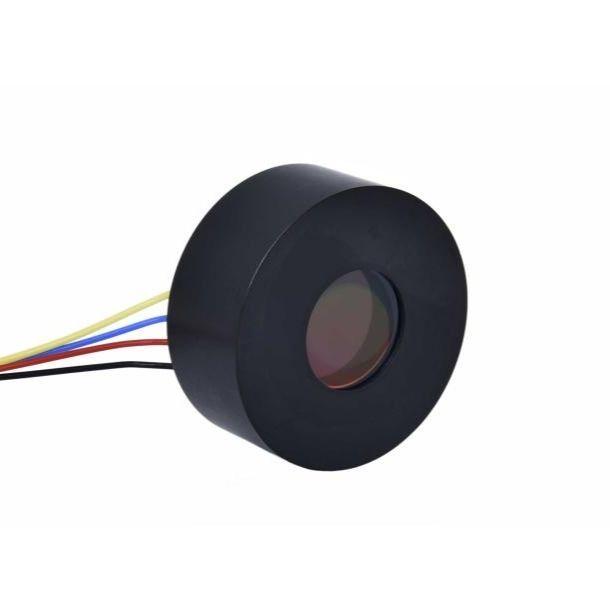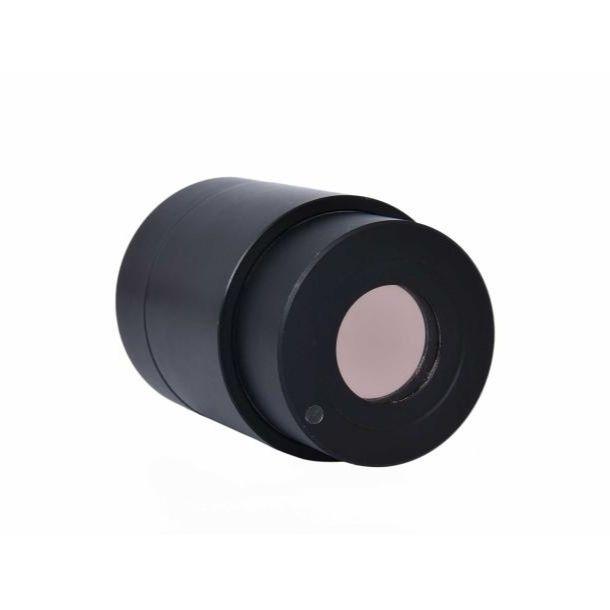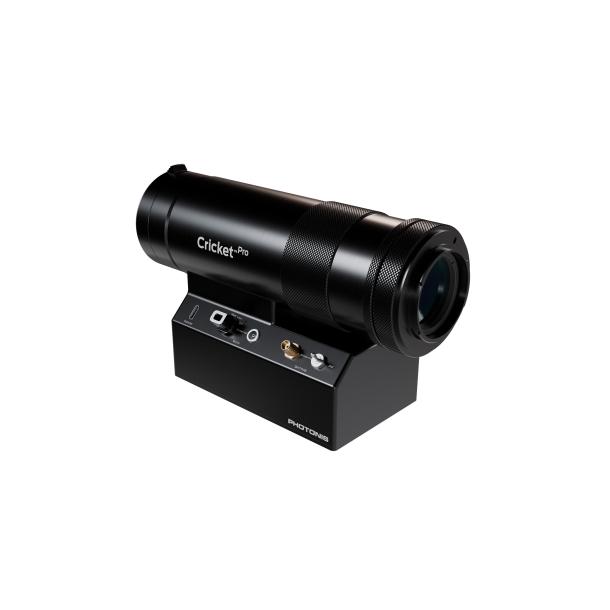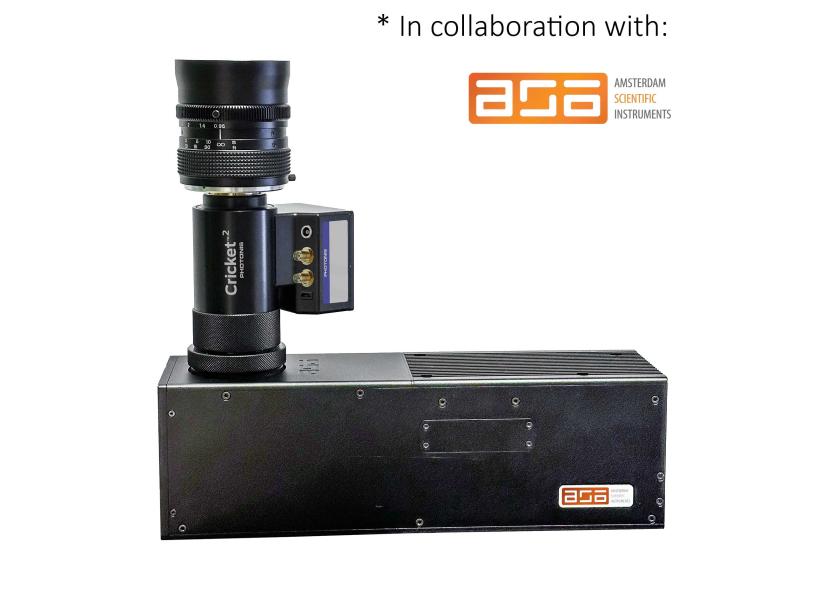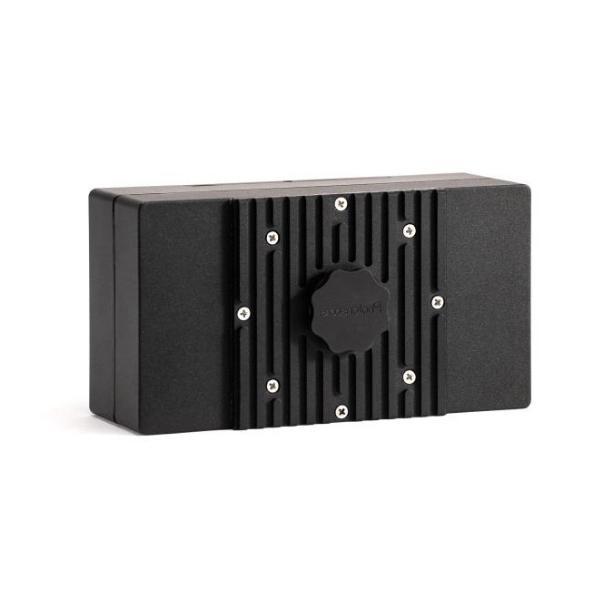

PhotonPix™ Single Photon Detector
![]()
With superior performance in dark noise reduction, readout speed, and timing accuracy, PhotonPix™ sets a new benchmark for single-photon detection, delivering reliable, high-quality data that accelerates scientific discovery.
PhotonPix™ Single Photon Detector
Contact sales or request a quote
Contact usTechnical Information
Detector Specifications | |
|---|---|
| Max. Recommended Count Rate | 100 MHz (continuous count rate), 200 MHz (burst) |
| Shutdown Count Rate | 110 MHz (continuous count rate) |
| Dark Count Rate (Cps, total area) | < 15 (UV,Blue) < 50 (Green) < 200 (Red) |
| Timing Jitter (FWHM) | < 30 ps (up to 15 MHz), < 40 ps (up to 200 MHz) |
| Active Area (mm) | 8 Ø |
| Dead Time | <2 ns |
| Discrimination | Integrated CFD |
Signal Output | |
|---|---|
| Output Connector | SMA Female |
| Output Signal | NIM, 50 Ohm & raw amplifier signal |
| Polarity | Negative |
General | |
|---|---|
| Power Supply | 12 V, 3 A |
| Optical Interface | C-Mount |
| Dimensions (w x d x h) | 117 mm x 61 mm x 70 mm |
| Cooling | Integrated water cooling and external radiator for heat dissipation |

Figure 1: Graph showing excellent temporal resolution as a function of input pulse rate, measured in burst illumination mode operation. Up to 15 MHz the TTS remains below 30ps FWHM (12 ps σ), where the pulse counting efficiency is close to 100%. Thanks to the very short deadtime, detection at 500 MHz is possible (with 50% counting efficiency). Even at this high input pulse rate, the timing accuracy is below 40ps FWHM (16 ps σ).

Figure 2: The PhotonPix™ converts the analog signal from the MCP-PMT to a digital NIM signal. This conversion determines the deadtime of the PhotonPix™. In this diagram the ultra short deadtime of under 1.6 ns is demonstrated. For the analog signal the peaks on the left with a time spacing of 0.8 ns only one digital signal is observed. When the time between two incidents photons increases to 1.6 ns, as shown on the right, two distinct signal are observed at the output.
Description
PhotonPix™: Ultra High-Rate, Ultimate Timing Accuracy Single Photon Counting
Experience a new standard in ultra-fast single-photon counting with PhotonPix™, powered by Photonis' cutting-edge MCP-PMT technology. Engineered for demanding applications like LiDAR, Lifetime Imaging, and Photon Entanglement, this advanced detection unit excels with dark counts under 20 cps and thanks to the read-out electronics dead time below 2 ns, it demonstrates count rates surpassing 200 MHz—equivalent to photon rates above 1 GHz in burst mode. Designed to capture even the faintest signals, its Ø8 mm sensitive area accommodates Photonis' high-quantum-efficiency (Hi-QE) photocathodes, maximizing photon detection efficiency across a wide spectral range.
Beyond throughput, PhotonPix™ offers remarkable timing precision with a resolution below 30 ps FWHM (12 ps σ), positioning it as a top choice for applications requiring pinpoint accuracy. Its integrated design includes all necessary electronics—a high-voltage power supply, fast amplifier, and constant fraction discriminator (CFD)—for seamless "plug-and-play" operation. Compatible with most time taggers supporting NIM signals, it simplifies deployment across diverse setups.
PhotonPix™ incorporates Photonis' optimized MCP technology, achieving excellent Pulse Height Distribution (PHD), near-100% Collection Efficiency (CE), and photon detection efficiency (PDE) closely matching its quantum efficiency (QE). With quantum efficiency exceeding 30% and exceptional performance for Hi-QE UV, blue, and green photocathode series, PhotonPix™ ensures clean, accurate data collection with minimal noise.
PhotonPix™ also features integrated Peltier cooling, reducing dark count rates by up to three orders of magnitude compared to room-temperature operation. Water cooling efficiently dissipates heat, enabling use in closed or integrated environments.
As a high-performance module crafted by Photonis, the global leader in low light imaging and single photon detection, PhotonPix™ is the ultimate solution for ultra-fast, reliable single photon counting, unlocking the full potential of high-speed detection needs.

Photocathode Overview:







